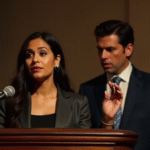Introduction
The question is not whether an economic risk exists in the judicial reform, but rather its magnitude and what measures will be taken to mitigate it. Who will take charge of this matter, and when will they begin working on it?
Elections Approach and Judicial Focus
As elections near, all efforts from the government seem to be aimed at securing a 20% voter turnout. The functionality of the judicial system requires significant improvement, but the recent reform appears to be more politically motivated than addressing underlying issues. Concerns arise about whether this reform will genuinely benefit the historically disadvantaged and contribute to a more efficient economy. Several challenges are anticipated, especially in the initial stages.
Banxico’s Cautious Stance
The Bank of Mexico (Banxico) has expressed caution, focusing on monetary policy, inflation control, and evaluating financial system risks. With around 56,000 bank vs. customer lawsuits pending in local courts, the transition in the judicial system presents numerous challenges.
Business Community’s Silence
Despite private sector concerns about the judicial system’s future, they have maintained silence regarding the controversial appointment processes. They have neither criticized nor raised concerns about the “lottery” spectacle in the Senate nor the intervention of governors and scandals surrounding incompetent or crime-linked candidacies. This silence stems from a preference to avoid appearing opposed to President AMLO’s projects.
Impact on Investment and Economic Growth
The judicial reform’s potential consequences on investment and economic growth are significant. Businesses have been cautious, expressing more through their investment decisions than words. There has been a downward trend in Fixed Capital Formation (FCF) for several months, with a 6% drop in February 2025 compared to the same month in 2024. This decline began in September, coinciding with Morena’s consolidation of a qualified majority in Congress and the judicial system’s demolition.
External Factors and Experts’ Opinions
In the Bank of Mexico’s monthly survey of experts, external conditions have been the most significant factors hindering economic growth. Trade policy concerns rose from 2 points in September 2024 to 19 points in March 2025. Meanwhile, rule of law issues—excluding public safety concerns—decreased from 16 points in September 2024 to 7 points in March 2025. The reasons for this decline remain unclear, leaving one to wonder if experts have resigned themselves or been influenced by optimism about the future.
Key Questions and Answers
- What is the main concern regarding the judicial reform? The primary worry is the potential economic risks associated with the reform, including its impact on the historically disadvantaged and the efficient functioning of the economy.
- Why is Banxico cautious? Banxico’s caution stems from its responsibility to manage monetary policy, control inflation, and assess financial system risks.
- Why have businesses remained silent about the judicial reform? Businesses prefer silence to avoid appearing opposed to President AMLO’s projects, despite their concerns about the appointment processes and potential consequences.
- How might the judicial reform affect investment and economic growth? The downward trend in Fixed Capital Formation suggests that businesses are hesitant to invest due to uncertainties surrounding the judicial reform.
- What do experts think about the factors hindering economic growth? Experts have expressed growing concerns about external conditions, particularly trade policy and rule of law issues, though the reasons for their declining emphasis on these factors remain unclear.






